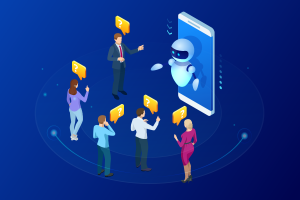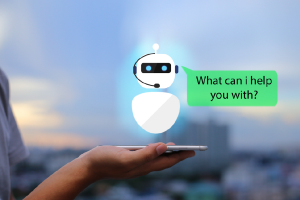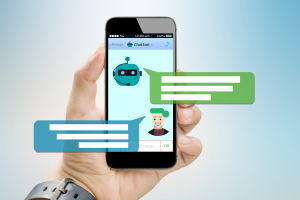Tag: Human Resource Management
The entire world is grappling with the scare of the COVID-19 pandemic. Given the uncertainty of the pandemic, Human Resources departments across the globe went into overdrive to map out all possibilities that employees would undergo. Previously, HR departments were concerned with compensation, compliance, and benefits. However, with changing times, their role as HR professionals evolved. Today they are supporting the greatest assets of their company: Employees!
Beyond hiring and growth, HR professionals are now seen as strategic partners for every department within an organization. The resilience of an organization and its people depends on the strength of the HR department. It plays a vital role in boosting the economy. HR professionals cushion the sudden shift in workplace culture and equip the team for the future of work.
The pandemic has suddenly brought in industrial shifts. Understanding these shifts is the key that helps in keeping pace with the rapid developments across the organization. That is why HR professionals are called the pulse of any organization. However, this is not easy as they face several challenges.
Read more: Why Develop a Custom Platform for Remote Employee Hiring and Onboarding?
HR Professionals Face Increasing Challenges
In a remote work setting, technology continues to have a direct impact on the day-to-day work of employees. So, HR leaders must plan their technology investments more carefully than ever before.
Additionally, HR professionals may face challenges from their employers and employees whom they serve. Hence, HR personnel must identify upcoming challenges. This will help them to use technology to facilitate more informed decisions faster. Here are a few challenges:
1. Recruiting and retaining employees
Employers must hire candidates with an appropriate degree, skills, and experience. Plus, these candidates must be a good fit with the organizational culture. Once a candidate is hired it is important to retain the best worker through a successful employee engagement approach.
2. Bridging the gap between the employer and the employee
It is important to ensure that a qualified candidate does not slip through the cracks. This job needs to be thorough, requiring HR professionals’ full attention. This is also time-sensitive because the talent could be easily snatched by a competition.
Hence HR professionals need technology that can streamline the process of job postings, interview scheduling, hiring workflows for more efficient results. It should also improve accuracy and save the time of HR and applicants alike.
3. Pressured for faster decision-making
Most companies rely on data to make key operational decisions. To make informed decisions they must identify areas of exposure to and devise effective solutions. The pandemic showed us all that the work environment can change suddenly without warning. Hence, HR professionals need to have new information at their fingertips to predict the effect of change on their organization and make needed changes quickly to ensure the survival of their company.
Read more: Top 5 Organizational Imperatives for Business Leaders to Become Winners in the New Normal
Must-Have Technology Trends for the Efficient Functioning of an HR Department
Some technologies have emerged as a response to the pandemic. Even so, these may continue to be long-term shifts in the current and future workplace. These new technologies may help an organization stay resilient and better equipped to adapt to future crises.
1. Cloud talent management
Nowadays, HR professionals depend on multiple solutions to automate hiring, onboarding, performance evaluation, and more. Cloud-based HR tools give all members of the team access to relevant workplace data at any given time.
Cloud talent management reduces the risk of human error while processing data. It promotes collaboration within the team and saves time and money. It is also more flexible and easier to update, unlike the dispersed toolkit.
2. Geared up for remote work
The organization must ensure their remote employees working from various locations and time zones have the same learning opportunities. The latest HR technologies have a variety of products that improve remote work.
3. Increased focus on data security
Increased reliance on cloud technologies will need increased measures to protect sensitive data. The latest HR technology trends focus on security and push organizations to implement new procedures.
4. Self-service tools for employees
HR professionals are overworked as they are the employees’ go-to for workplace updates and any other information. With these additional responsibilities, some of this data can be made available to the employee via self-service tools.
These tools can increase administrative efficiency and improve transparency. They can provide real-time updates for all employees. It boosts team morale while reducing burnout.
Read more: It’s Time To Transform Your Business For The New Digital Age – Rise With SAP
How Can Fingent Help Adapt Better To The Rising Changes And Prepare HR For The Future?
Fingent top software development company, can not only change the way your organization is built but the way it runs as well. We can help you change work behaviors for the better. Your HR professionals do not have to be overwhelmed by repetitive administrative tasks.
Fingent can help you adapt better to rising changes. We can help you cut through the complexity of HR technology. Fingent’s customized solutions can help you scale up your core business strategies and focus on your most valuable asset – your employees. That is why our Fingent mantra is ‘locate and lock right talent.’
We understand that your workforce is the backbone of your organization. We will use our in-depth expertise, robust data analysis, and customized solutions to help you align your people, performance, and business values. Fingent’s people development platform Skill Lake is specifically designed to “build a holistic learning culture that goes beyond functional skills, speed up onboarding, and facilitate the on-the-job application of learning concepts.”
Check out the most unique people development platform – Skill Lake!
MUSA is another of Fingent’s brilliant solutions to help streamline and optimize HR and Talent Management tasks. Here is a bit about it:
Why was MUSA required?
Fingent realized that the PeopleOps team was overworked with several mundane jobs. That led to the development of AI-powered virtual assistants. This automated FAQs and improved the efficiency of HR teams.
What was the result?
The virtual assistant improved the HR team’s response time by providing instant and accurate responses to common queries. Thus, it relieved the HR team by minimizing their workload helping them to give adequate attention to the most important asset of an organization, their workforce.
Keep Up With Transforming Behaviors
Last year or so has seen the world change rapidly. This change may seem temporary. But here is a word of caution! This will spark a behavior pattern that will permanently transform the future of work. HR professionals must adapt accordingly to meet these changes. Fingent is confident that these and more HR tech trends will empower the transformation of the future of HR and talent management. Call us today and allow us to help shape the future of your HR function.
Stay up to date on what's new

Featured Blogs
Stay up to date on
what's new



Talk To Our Experts
Transforming Businesses with RPA- Leading Use Cases in HR and Banking
Various organizations use RPA tools to automate simple to complex tasks and perform them with minimal or no human intervention.
From an IT perspective, you tend to bucket all RPA uses cases into data integration or testing. However, from a business perspective, you need to find out how to get a better time to value and how to overcome obstacles that hinder the business value. Then you can determine use cases that fit into this characterization.
For example, you want to roll out a change in your business process, and need integration into another system. You can do that in two ways:
- either through APIs and get into the IT changed management routine,
- or by using RPA to drive interfaces without an API and get the change rolled out in weeks instead of months.
So, time to value is the calculation that businesses need to do, and check whether the change is worth it.
Read more: What Makes a Business Process Apt for Automation
Suppose you have to perform tasks that are very repetitive in nature – like filling in excel forms, web forms, things like visual basic or word with data which you already have access to, or which you need to aggregate from various systems. Here you can have an RPA bot to pull that data or even push out that data to multiple systems. You won’t have to rekey that information manually. You can always use an RPA bot to do that in an automated fashion. In both these cases, you can write integrations or you can have a system do it for you.
RPA gives you a way to configure that behavior rather than write a code for it. In other words, RPA use cases need to be data-intensive, rule-driven, and repetitive. The drivers almost always tend to be time to value, time to market, and so on.
Now that you’ve understood where to use RPA in your business, let’s have a look at some of the use cases.
RPA Use Cases in HR
According to UiPath, 40% of your HR professionals’ time can be reclaimed using RPA. Robotic Process Automation can be combined with your existing HR systems like SAP or Workday that allows you to create digital process automation with ease. Here are the two key HR areas where automation leads to transformation.
1. Payroll:
Payroll operations consist of a large number of repetitive, rule-based tasks with activities like data collection, calculations, and scheduling tasks. Payroll workers have to collect data from various departments or units in different formats. The next step is data validation and entering that information into other applications. All these tasks are prone to error.
These activities can be automated using RPA technology since all the data that payroll staff deals with is structured. RPA can make payroll more organized without using expensive software.
The benefits of RPA in payroll are improved accuracy, lower costs due to reduced manual labor and data security. Since the number of menial, time-consuming tasks performed by employees is reduced, they can focus on tasks with higher strategic value.
2. Onboarding and offboarding:
Every time you get a new employee, the candidate’s details have to be uploaded to all systems that you use. They may need a Windows account, access to your time reporting tool, email addresses, IT equipment, and so on. If someone from the HR team manually enters all this data they would be stuck in mundane tasks. Instead, you can have a script doing these repetitive tasks. With RPA, you can automate the entire onboarding procedure since the process is the same for every new employee.
Employee exits too, have to be managed consistently. Manual processing makes these tasks error-prone and may raise auditory concerns. If RPA is implemented in this case, the bot analyzes the incident to find out which tasks need to be executed. It notifies the IT team to terminate access and recover the equipment, terminates the employee from the HCM, revokes system access, generates exit documents, and processes final payments.
Read more: Jaw-dropping Facts about Robotic Process Automation
RPA Use Cases in Banking
A slow economy and rising customer expectations have caused banks to look for cost optimization methods. The back-end processing activities in the banking sector consist of tasks that are rule-driven, repetitive, labor-intensive, and high in volume. RPA technology can help to automate these processes, thus eliminating the need for human intervention. Here are the two major banking functions that can be automated for improved results.
1. Loan application processing:
The processing of loan applications is a tedious process. For document verification, employees need to manually verify different documents and associated information and then organize all data into a single file. Very often, employees get stuck in this task and spend too much time on it. RPA employed in this procedure can automate the whole process by opening different web portals and validating the information. The bot then initiates an email to the employee for a final decision. Thus, the bot helps to save valuable time and improves the time to client response.
2. Account opening:
The account opening process is cumbersome, time-consuming, and prone to errors. RPA can help speed up this process and make it more accurate. Bots draw out information from forms and enter it into separate host applications. Thus RPA eliminates errors and improves the quality of data in the system.
Read more: How Robotic Process Automation Simplifies Business Operations
RPA tools have the potential to help various industries improve efficiency, drive faster operations, and reduce costs than most automation techniques. RPA is gaining popularity as enterprises try to counter competition, increase productivity, and meet customer expectations. Early adopters of RPA have reaped its benefits and its high time that you did too. Get in touch with our custom software development experts to learn more about how RPA can simplify your business operations.
Stay up to date on what's new

Featured Blogs
Stay up to date on
what's new



Talk To Our Experts
How Is AI Changing the Game For HR?
With Artificial Intelligence (AI) making sweeping reforms in every aspect of a business, it comes as no surprise that Human Resources have discovered just how beneficial this technology can be. From talent acquisition to policy planning, payroll engagement efforts, and reporting, AI recruitment is enabling businesses to save time and costs, increase productivity and improve accuracy.
This blog will discuss 3 ways in which AI has proved to be a game-changer in HR.
1. Selecting and Training Employees
Hiring the right employee and ensuring that he is a good fit in the organization is a fundamental tenet of success in business. Let’s consider the hiring process. AI recruitment can surpass biases, eliminate manual and machine limitations, and enhance the screening process by better identifying skills gaps and selecting candidates that have the highest potential for success.
Dr. Jeremy Nunn, Founder, and Director of Workmetrics, a leader in workforce software say: “Thanks to AI, organizations are able to better grade and rank qualifications during the screening process, develop candidate profiles, interact with job candidates and quickly reach out to the best ones before other companies take action.” Consider the hours of work that this will save for recruiters!
AI can also enhance existing technologies and refine the application process. In an earlier blog, we had talked about how the Applicant Tracking System (ATS) is Transforming Hiring Norms. AI can further enhance these technologies in several ways. For example, instead of the ATS relying only on a set of manually entered keywords to qualify a resume, AI helps the system look beyond the keywords and understand the concept behind the requirement. Deep Learning, Sentiment Analysis, Predictive Analysis, and other AI concepts can be used to enhance the candidate screening and qualifying process.
AI recruitment technology has also proved its mettle in the training and development of existing employees. It has the ability to get an overview of the entire workforce at once and automatically analyze the skills in each employee. It can then match these skills to the organization’s objectives and provide insights into specific areas for improvement and recommend the most effective training for each employee.
2. Improve Employee Experience
Improving the overall experiences of the employee with the company through every touchpoint is now made possible with AI technology. AI can enhance factors that affect an employee’s experience like compensation, communication, opportunities to grow and much more.
Let’s consider Compensation Benchmarking for example. The traditional benchmarking strategy based on titles doesn’t cut it anymore, because the functions performed under a title is seldom the same across different companies or even across departments. AI recruitment overcomes this issue by processing large amounts of employee-level responsibility data and providing accurate comparisons between employees through machine learning models. This helps businesses identify and accurately compensate employees with similar responsibilities and caliber.
Another important aspect of employee experience is access to information and communication. Discussing a survey by ServiceNow, their HR Evangelist & Transformation Leader Jennifer Stroud says: “30 percent of survey respondents said they want functionality that mimics Google to easily search for answers to their questions as well as policies and other critical company information.”
Conversational AI for the HR system will help in this regard. AI-powered programs including chatbots can be used to provide employees with instant answers to their questions right from the onboarding process. Access to basic training modules, guidelines on business ethics and conduct and other information can also be provided this way. Chatbots can govern access to documents based on the employee’s title and other factors. Natural language processing (NLP) has been vital in the success of conversational AI.
Content personalization by using predictive analytics has also been instrumental in enhancing the employee experience by recommending the most suited professional development programs and career paths for each employee.
3. Critical Decision Making
With data-backed insights and intelligent recommendation engines, AI can help solve persistent HR challenges. By aligning functions of HR to the overall business strategy and organizational goals, AI helps HR managers come to the right decisions that will be beneficial to the organization in the long run.
In the context of strategic HR decisions, the role of AI in Manpower Planning and Productivity Management is gaining recognition. Let’s consider the measurement of productivity of the Sales Function as an example. Traditionally, this has been measured by the achievement of targets. This, however, rules out considerations of missed opportunity or optimal revenue extracted from the market. AI helps in this regard by providing an overall analysis of the market, the competition and runs comparisons with the skills, attitude, and effort of the sales professional. Drawing this data from CRM, accounting, Geo-position tracking, sales logs and more is no easy task but is achievable by AI.
Transforming HR with AI
Although two-thirds of CEOs say AI will drive significant value in HR, only 11% of CHROs say that their organization has the skills to implement it. Don’t let your business be one of the 11%. Give us a call and let’s make AI happen for you.
Stay up to date on what's new

Featured Blogs
Stay up to date on
what's new



Talk To Our Experts
Is Applicant Tracking System The Future Of Hiring Process?
“Hiring the right employee has always been the key element for a successful organization. When you choose the best, you automatically get the best results!” _ Deepu Prakash, Senior Vice President, Process and Technology, Fingent
While candidates come aplenty, finding the right talent from the pool has always been an enormous challenge for recruiters and staffing agencies. Thankfully, technologies like AI-powered Applicant Tracking Systems are changing that in a big way.
An Applicant Tracking System (ATS) is a software that automates the recruitment process. It electronically filters, organizes and streamlines job applications according to job postings. ATS simplifies the complex process of recruitment by providing a centralized platform to view applicants. AI-powered Applicant Tracking Systems enable filtering applications based on set criteria and helps recruiters a big way, in tracking the advancement of applicants through the hiring process. In this article, we will consider how ATS can prove beneficial to recruiters and staffing agencies in particular.
How Does ATS Transform Hiring Norms?
ATS collects and maintains a database of candidate resumes and applications within itself. ATS tools help in hiring managers and corporate recruiters track and filter resumes in the hiring funnel. The major difference between traditional hiring and hiring with the help of ATS can be compared to the difference between fishing with a hook and fishing with a net. The benefit of the latter is a much bigger catch! ATS allows recruiters to track hundreds of applicants more efficiently rather than handle each applicant manually.
Companies that outsource talent can benefit greatly from ATS. Since they are not limited by geography, they can cast their net globally. It is not uncommon for a company to receive thousands of applications for a remote job they have posted. With ATS, they can filter out the right candidates for the job and save time and cost.
How HR and IT Combine to Deliver Real Value to the Enterprise
How Does ATS Empower Corporate HR?
ATS empowers the recruitment process in the following ways:
- ATS enables recruiters to post jobs online, receive and sort applications, screen out unsuitable candidates, process applications, communicate with candidates quickly, organize interviews and even handle the hiring process online.
- The AI integration enables ATS to identify patterns and segregate resumes/candidate profiles according to various departments and customized fields.
- One of the most important benefits is that it saves time. It is estimated that resume screening and candidate shortlisting can take 23 hours and making a hire could take four months. ATS can make this task easier, faster and automated, thus reducing the cost-per-hire and the time-to-hire.
- ATS allows corporate recruiters to be proactive and create jobs on platforms, which can be published on social media networks as well as targeted job boards.
- ATS assists corporate recruiters to screen candidates, to ensure they progress through the workflow process and store all the documentation in one place. It helps them to monitor applications at each stage and identify any issues early on thus reducing the time-to-hire period.
- Another important recruiting goal and challenge are accessing the right candidate skills. ATS includes features for customizable interview scorecards and questions. It allows recruiters to customize them based on the most important characteristics. This makes candidate evaluation easier and efficient.
- With AI-enabled ATS, recruiters can also set match levels for various job roles under different departments.
- An ATS with good reporting functionality will be able to help corporate recruiters measure the effectiveness of marketing. A good reporting engine will help recruiters, quickly pull out reports which show things like diversity statistics and the source of the application.
- Online job boards make it quick and convenient for candidates to apply for open positions resulting in a load of unrelated applications. An ATS is capable of quickly weeding out those unqualified candidates even before humans open a resume.
Related Reading: Check out how Odoo can help meet HR requirements.
How Does ATS Empower Staffing Agencies?
More than 98% of Fortune 500 companies are using ATS. This is a clear indication that ATS is an indispensable software for staffing agencies. Here are a few reasons why:
- An ATS helps staffing agencies grow their business. The bigger the staffing agency, the more complex their database. Communication, tracking candidates, and other recruiter activities can become difficult to manage. AI-enabled ATS identify patterns and sorts resumes according to job profiles helping recruiters choose the best candidates among the large pool.
- ATS empowers staffing agencies to source candidates more efficiently. The existing candidate pool within an ATS is often a very good resource for finding quality candidates.
- A good ATS has an open ecosystem where you can match solutions to needs effectively. This allows users to customize ATS to meet a client’s specific needs by adding partner extensions, integrating third-party vendors, and building new applications on the platform.
- ATS improves the candidate experience. According to key findings in a Global Recruitment Insights and Data study, respondents said that “candidates will matter most in 2019, with sourcing (61 percent) and candidate engagement (36 percent) leading the pack.” ATS along with its integrations can help in this regard by simplifying and enhancing every step of the candidate experience.
- It helps agencies keep their clients happy by improving client management. ATS can log all of your conversations with a client automatically.
- ATS helps staffing professionals to be more productive because it allows team members to work from anywhere and still collaborate effectively.
- The conventional recruiting process causes a lot of friction between hiring managers, the HR department, and others involved in the process. An effective AI-powered ATS will help smooth things out and reduce disagreements, thus making it easier for all involved to work together.
- A shorter time to hire always works better for the organization. Not only does it save resources, but it also ensures that suitable, qualified candidates are selected and hired quickly before the competition has a chance to snatch them away.
Power Charge Your Hiring Process with ATS
As discussed, a good ATS will illuminate and guide all aspects of the recruitment process. It will help corporate recruiters and staffing agencies better understand their candidate pool and make quicker and more effective hiring decisions. It is reported that 86% of staffing professionals were able to hire faster with the help of ATS. Understanding and using the candidate database to improve hiring performance helps the business act more quickly. Quicker onboarding process results in increased productivity, which translates to more profitability.
Fingent top custom software development company, will understand the need to keep pace with the requirements of today’s market. Bringing together smart AI and recruitment practices, we create purpose-built software to help you reach your ideal candidates faster. So let’s get you started with an Application Tracking System that will transform your business and beat the competition.
Watch more about Applicant Tracking System.
Stay up to date on what's new

Featured Blogs
Stay up to date on
what's new



Talk To Our Experts
How relevant are chatbots in today’s business landscape?
Apart from merely acting as conversational interfaces to deal with customer queries, do they help your business flourish with improved sales and new revenue streams? Yes, without doubt, and specifically if it comes powered by state of the art AI.
In this digital age, your valued customers are constantly on the lookout for personalized services. Structuring the experiences, chiefly customer service in a rather consistent and proactive way backed by data analytics will enable personalization on a much deeper level.
AI-powered chatbots will do that just one step smarter. Whether it’s round the clock customer support or driving engagement with advanced analytics, chatbots will minimize the role of human agents and do away with contact centers for delivering an uninterrupted customer service experience.
The outcome: better engagement, reduced churn rates, and overall sales growth.
Thereby, capitalizing on chatbots has turned out the need of the hour, especially if you wish to deliver augmented customer experiences and automate several of your critical business functions.
As a solutions provider, we did experiment with chatbots upon the request of our client . After extensive consultations, Fingent developed an AI-enabled chatbot to foster an engaging learning experience for the students.
Related Reading: 5 Ways Chatbots Can Transform Your Real Estate Business
AI Chatbots Fulfill a Broader Role in Organizations
Besides customer support and engagement, chatbots can undertake several tasks that need consideration. Its key role, however, is to serve as a replacement for tasks deemed repetitive and time-consuming. These include:
-
Automating Repetitive Tasks
Repetitive tasks take up time and redirect your efforts from areas that demand more attention. Deploying chatbots is one way to automate a multitude of recurring business functions within your company. In customer service, chatbots can readily take over the process of engaging basic customer inquiries round the clock and automatically redirect more complex interactions to human agents. AI bots also enable automation into your organization’s IT helpdesk to instantly provide answers based on your employee queries or FAQs. Besides, it can even offer IT support like a password reset without the need to consult with the IT team.
Our work with the client yielded a similar AI chatbot dubbed as a “virtual teaching assistant”, which allowed the students to interact, ask queries and get the relevant teaching materials, syllabus and schedules related to their curriculum 24/7. Thereby it serves as a replacement for the primitive methods utilized like forums where the instructor would need to answer a particular question several times repetitively.
-
Streamlining Lead Generation
As a salesperson, you may find it difficult to move customers through the sales funnel. With incoming cold leads, the process requires a coordinated approach to obtain successful conversions. You can assign chatbots to take over this process since they are more capable when it comes to creating engaging customer experiences. By analyzing the communication flow, chatbots deliver an interactive experience for active engagement, have quicker response rates, facilitate a friction-free experience and are available throughout the day.
Besides, AI chatbots rely on data leftover from previous customer interactions, which helps you better understand customer preferences and tastes, thereby helping out target future communications and recommendations that are highly effective in transforming and converting the potential cold leads into actual customers.
-
Gathering Details for Lead Targeting
Incoming leads never wait for your time and may bounce back if they find no signs of engagement. If you are away or the helpdesk personnel fails to respond, an alternate strategy is to collect basic details from the incoming leads to follow back at another convenient time. Gathering basic details from initial conversations like the client company size, budget or whatever the salespeople collect with their usual template from incoming leads is a routine task that might be tiring for your sales personnel.
Assigning a chatbot to do this task is a good way to make sure all the key details from incoming leads are collected and stored for later reference. Chatbots can engage with multiple leads at any time of the day and give them a consistent experience throughout, which sets the initial stage for successful conversions.
However, it does in no way imply that human intervention is to be completely left out. There is always the risk of possible mistakes made by the chatbot that will result in losing your potential leads. Certain measures like handing over the process to a human agent at the right time for taking charge over the lead conversion process should strictly be incorporated into the bot’s layout.
-
Substituting Contact Us Forms
Whether it be a standard contact form for business inquiries or feedback form or even surveys regarding a particular service, chatbots can take over the process and seamlessly guide the user through the process. Most websites still use forms containing multiple fields that must be manually filled with information, which is annoying to most users and thus indirectly contribute to rising bounce rates. The data obtained from contact forms are crucial for companies to create individual customer profiles for reorienting their services for the better.
AI bots, on the other hand, eliminate the need to manually enter information in the required fields by replacing it with engaging conversations. By gathering all the details concerning each customer that it engages with, an AI bot can gather data needed for the forms through initiating natural conversations. Besides, an intelligent chatbot can prolong the conversation and obtain more data from a customer as well as even try guiding them to other services/product landing pages, which is not possible through a generic form. This ultimately saves your customer’s valuable time and boosts engagement, which reflects back through increased conversions.
Related Reading: Industry experts weigh in on the adoption of AI and ML in software development
Chatbot Building and Integration Platforms Keeps Multiplying
It is now far easier to build and deploy chatbots thanks to the wider availability of chatbot development and publishing platforms. Both serve as tools and applications designed to create, test, train and deploy chatbots for use across varied business front-end operations. Understanding the slated differences between the two is vital.
A chatbot development platform is a tool or application used to build a chatbot from scratch. Using a bot development platform gives developers more room to add extra functionality into the chatbot like machine learning, API integration, and conversational flows.
Some popular enterprise chatbot development platforms include:
- IBM Watson Assistant
- Microsoft Azure Bot Service
- Google Dialogflow
- Facebook AI
- Chatfuel
- Botsify
Chatbot development platforms come in two types:
Non-coding Chatbot Platforms
Platforms that do not require any first-hand coding knowledge. It’s pretty basic and even novice programmers can start building their own chatbots using various features like drag-and-drop interfaces and other built-in resources.
E.g. – Chatfuel, Botsify, Flow XO, KITT.AI
Coding Chatbot Platforms
Platforms that require little or intermediate coding knowledge and skills. Comes integrated with a wider array of technological frameworks giving developers an edge when it comes to creating remarkable conversational interfaces inbuilt with AI. Coding development platforms chiefly find use in creating intelligent bots with extended capabilities and integration into CRM or other systems in an organization.
E.g. – IBM Watson, amazon lex, Wit.ai, Dialogflow, Microsoft Bot Framework
Building Chatbots from Scratch
You can also build a chatbot without depending on any platform. This would require specialized coding knowledge and skills to use development methods that include deep learning, Python libraries like NLTK, sci-kit learn, etc. Here, the development team will have total control over the bot’s learning curve.
Related Reading: Chatbot Security Measures You Need To Consider
Chatbot Publishing/Integration Platform
A chatbot publishing platform, on the other hand, is the medium through which the chatbot is made accessible to the users.
A few examples are:
- Your business website/ web application
- Facebook Messenger
- Telegram
- Intercom
- Slack
- Tumblr
- Skype
- Google Assistant
- Siri
- Alexa
We chose IBM Watson to create and deploy the bot for our client owing to the robustness, scalability, multi-language support and natural language processing capabilities of the platform.
After settling on a development or publishing platform, obviously, the next thing when it comes to creating a chatbot is to ensure that it contains all the elements that make it intelligent and conversational. The key aspects that round off a chatbot should be well defined beforehand so that it remains beneficial to you and your customers.
The Prerequisites of Building an Enterprise-grade Chatbot
Getting started with building a chatbot require a coordinated approach. First and foremost, you should remain clear of the intention behind deploying a chatbot. Will your business really be better off by deploying a chatbot? What function do you attribute the chatbot to take up in your organization? Is it a replacement for customer service across various user touchpoints or in a broader sense, to automate several key functions of your business like HR or sales.
Whatever the use case may be, there exist several key attributes to adhere closely when building a chatbot. As the technology partner for our client, our work with AI chatbots did present us with an entirely different note on the how-tos of building and deploying chatbots having remarkable conversational interfaces. Out of these takeaways, here are some noteworthy points to take care while building a chatbot for your business.
-
Design a Fluid Conversational UI
A well structured conversational UI stays at the core of any chatbot program. A sound conversational interface delivers a truly frictionless experience for the user across different touchpoints where it is deployed. By using an interface centered around language, conversational UI brings more ease and proximity in the interactions between the chatbot and its users than what is obtained through syntax-based commands or icons.
-
Pinpoint the Target Audience
Defining the target audience, which the bot is intended to serve stays in line with the actual purpose that the bot will serve. To do that, you should begin with clustering the targeted group and then bring into the picture their needs and expectations. The bot’s persona and abilities should remain in sync with the needs of the target audience, whether it is answering basic queries or guiding the user access services, making purchases, provide information, etc.
More importantly, the age group which the user category belongs also have a determining role since it helps structure the interactions of the bot in such a way so that it remains consistent with the age of the user. For a target audience well beyond 60+ years of age, the bot should engage with them differently than they would do to a teenager.
-
Apply Domain Knowledge or Specialization
Domain knowledge roughly translates to the knowledge and deep understanding of a specialized field or discipline. When applied to chatbots, domain knowledge brings a sense of purpose regarding the function that it is geared at whether it be assisting your customers to get answers to their inquiries or with lead scoring for guiding customers through each step of the sales funnel. It is actually learning, training and understanding through every interaction or task and then iterating for rapid improvisations in engagement and functionality.
-
Provide a Distinct Personality
Building chatbots devoid of any personality traits make it dull and robotic, which never interest the user to take any action, least create trustworthiness. Giving a distinct personality into the chatbot that you build remain pivotal as it represents your company’s unique branding to the customer first hand and creates engagement on a personal level. Weaving the personality based on the target customer that it serves, alongside giving it personality traits like a sense of humor, wit or even sweet sounding contributes significantly in providing a delightful customer experience.
-
Enable Quick Transfer to Human Agents
Bots, however, advanced they may seem with AI and NLP can at times remain incapable or even falter when engaging with customers. Switching to a human agent at the exact time is one way to prevent your customers from getting frustrated and leave while still providing the assistance that they seek. When designing a bot for customer service, it is mandatory to put into place the procedures that ensure a seamless transition to a live human agent whenever the customer becomes irate or dissatisfied with the bot’s interactions.
-
Acknowledge the User at Every Input
While designing the bot, it is downright important to add a built-in response mechanism that automatically acknowledges every single user input. When a user types in a query or for other information, the bot should first recognize the input and give immediate feedback. Failing at this can leave the user uncertain whether the bot has actually understood the given input. By creating a means to recognize the user input through a return message or greeting, the bot will appear more engaging and human-like to the users.
What to Avoid when Designing a Chatbot
Building a chatbot step by step can turn futile if one fails to understand the specific things or mistakes to avoid. Being a challenging process, bot development comes with its own pitfalls extending into every stage of the building process right from conception to maintenance, which is something developers need to be aware of.
Here are some of the common mistakes to avoid while designing a chatbot:
-
Avoid Conversational Roadblocks and Looping
In certain situations, a chatbot can fail to provide answers to the user and would end up repeating the same responses over and over thus creating a loop. If not dealt with immediately, such conversational loops can frustrate the user causing them to exit. Besides, such roadblocks leave the user unable to continue with the chat thereby prompting them to refresh the conversation and start everything from the beginning.
When designing a chatbot, it is downright important to eliminate any instances of looping with the exception of feedback loops by rigorous testing before it is made available to the users.
Beyond that, a chatbot should never force the user to repeat or structure the questions differently in order to understand the intent. Rather, the chatbot should be able to understand all the different types of questions and not just the samples it was trained on to provide the right answer.
However, confirming if the provided response was helpful to the user is a good way in which the chatbot would be able to learn and evolve over time. Rigorous testing to cover all possible chat flows of the user will help you avoid such instances of roadblocks and looping.
-
Missing Out on Testing Prior to Release
Failing to subject the bot to several phases of testing is one thing to avoid when building chatbots. Testing a bot for any discrepancies can help identify potential bugs or errors that affect the quality of its interactions. The testing phases go through the developer, functional and user aspects to assess the speed, accuracy, intent, and conversational flows of the bot for making it flawless prior to release.
-
Opting the Wrong API
Drag and drop bot development frameworks may work easy but comes with severe limitations. That does not mean settling on a coding platform to start building your bot from scratch, which has its own drawback of higher turnaround times. The right approach is to opt for a framework that balances all these features with the ability to customize them depending on the task. Bot building frameworks like IBM Watson contains a mix of the two and is preferred over basic builder platforms.
-
Poor Design and Build
Poor design accounts for several issues that may crop up once the chatbot is deployed and made live. It may lead to inconsistencies in the interactions, forcing users to exit causing an increase in bounce rates. Bad design contributes to a cluttered user experience that interferes with seamless navigation through the predefined conversational flows. Understanding the scope of the bot and then working on building a hassle-free interface can resolve the issue.
Elements that Define the Brain of an AI Chatbot
In a chatbot, certain elements present commonly dictate the functioning and help the bot understand the user input to provide the appropriate answer. The concept guiding all chatbot building platforms is to train the bot using Q/A pairs as represented by the following elements:
Intent – Identifying the intention of a user query
Entity – Identifying the entity in the user’s intent to understand the intent further
Dialog – Response provided to the user for the identified intent and entity
To better understand the intent, entity, and dialog, consider a chatbot integrated with Alexa at your home.
Turn off the Lights, Turn off the Music, Turn off the TV are all user commands with the same intent – “Turning Off”
Lights, Music, TV are the entities based on which Alexa decides what needs to be turned off.
The response Dialog from Alexa would be entirely dependent on the intent and entity, which produces the following output – “Hi, turning off music for you.”
Deviating from the conventions governing the functioning of rule-based bots, AI chatbots goes an extra mile when it comes to the quality of interactions. Put side by side, it is easy to distinguish between an ordinary bot and an AI customer assistant.
The former is severely limited in functionality and lags behind when it comes to creating engaging customer experiences. The latter is more adept at interacting with multiple customers and delivers human-like conversations by wrapping a layer of personalization.
Besides, AI bots contain a few extra elements, which gives them their natural conversing abilities and customer service automation capabilities such as:
-
Natural Language Processing (NLP)
Natural language processing gives chatbots the ability to carry on natural conversations with humans. It enables the bot to interpret the user input and provide responses accordingly. An NLP enabled bot can seamlessly understand the intent, entity, and context of the user commands to render accurate matching responses that carry on the conversations in a smooth flow free from any interruptions.
-
Knowledge Base
An intelligent bot derives its ability to instantaneously supply information to every user request while moving through the sense-think-act cycle using a knowledge base. Simply put, a knowledge base acts as a repository for the trained data sets and the data gathered by the bot through every user interaction. This accumulated data acts as a source for the bot to pick the relevant information upon request as well as to multiply its learning capability.
-
Quick and After-hours Support
Anytime engagement is possible with an AI-based customer assistant owing to its round the clock availability. Engagement must happen at any time of the day whether human agents are behind the desk or not. AI customer assistants can reach out and retain customers at any given time thus minimizing or eliminating the chances for any miss outs. Even after elapsing conventional working hours, an intelligent bot can provide constant after-hours support to field multiple customer inquiries for acknowledging their requests/queries.
-
Personalized Experiences
Services tailored to individual needs have ratcheted up in demand. AI bots can do well to provide the user exactly what he/she needs by creating highly personalized experiences. Getting acquainted with a user and gradually moving up the level of interactions into a more personal level makes the customer feel valued. One way chatbots do this is by recalling the specific context derived from previous conversations.
Ideally, a well-designed chatbot should able to look back on the data trails leftover from previous user interactions to minimize the need for the user to repeat the things that they have already mentioned before. By training the bot with relevant questions and leveraging user data from past interactions will spruce up the interaction level and usher in truly personalized experiences that trigger successful conversions.
Chatbots Finds Application in Diverse Areas
Chatbots make it easier to get a specific task done. There is no need to have a separate app since it is possible to ask the bot directly via any messaging platforms that it is compatible with. Besides automating customer service, chatbots have acquired a renewed role and have forayed into several areas linked to our lifestyles. Its applications have broadened from pushing content to making payments, getting recommendations, etc. Some of these include:
-
Ordering Food
Ordering food from your favorite restaurants is easier with chatbots. Major fast food chains have already deployed chatbots that allows its customers to place orders by initiating conversations. Its relatively easier and do away with the need to have a separate app. A user can order food directly by asking the bot, which will then easily guide through the rest of the process like showing up the current menu, finishing with the payment and tracking the delivery status in real-time.
-
Booking Tickets
Whether getting reservations for dinner at your preferred restaurant, to booking flight or movie tickets, chatbots can turn it simpler and interesting. Rather than having to go through an app and tediously follow around, a chatbot delivers a hands-free experience (if the bot supports voice commands) or a minimal interface to quickly search, compare and book tickets all via natural conversations.
-
Content Delivery
Curated content is on the rise and chatbots can help with the filtered dissemination of information based on user interests. Top media and news organizations are now integrating chatbots across popular messaging platforms like Facebook Messenger to deliver content like news, insights, blogs and how-to guides by understanding user preferences. Users can get the latest content right away by conversing with the bot without installing separate apps or searching the web.
-
E-Commerce
Chatbots integrated into e-commerce platforms can guide customers to make informed decisions related to their purchase faster. It enables a more convenient shopping experience as customers can search and shop by conversing with the bot via text or voice. The use of conversational assistants in such shopping portals will give rise to improved personalization of their services, which ultimately adds to customer satisfaction and help them get the right products meeting their wants and needs via recommendations.
-
Human Resources

We did work on an internal chatbot for automating a few of the functions related to our HR department. Already in use, this chatbot is successful in providing assistance to the HR team by giving first level support to the employees around the clock in areas like onboarding, circulating training documents, and employee assessments.
Will Chatbots Ever Replace Humans?
With Gartner estimating that 25 percent of all customer service operations will take place through virtual customer assistants (VCA) by 2020, it is without a doubt that chatbots and AI will positively disrupt how organizations deal with their processes and operations. Research into its potential value reveals that chatbots alone can help businesses save about 30 percent on customer service costs. Besides, the advancements in the field have elevated human-computer interactions to new heights, where the lines have started to blur.
So, will chatbots eventually do away with the need for human skills and labor?
The answer: No.
Chatbots are never intended as a replacement for human skills. Its fundamental role, however, is to serve as a means to augment the human skills in whatever function that it takes up, whether it is in personalizing customer service or automating certain areas of your business like HR, sales, marketing, etc.
Call centers or other organizational front-ends cannot function without adequate backends in the form of human agents. Besides, achieving true human-like conversation is still miles away and may very well turn out an unrealizable prospect. Considering the high efficiency of chatbots in handling certain tasks, it can function better on a limited scale rather than taking over entirely. Meanwhile, giving a bot full authority over specific tasks does possess security risks that may negatively affect your organization.
Moreover, human skill is still and will be in the future an indispensable irreplaceable element. This also means that none of us need to worry about AI bots being an existential threat to our jobs. Rest assured, AI will never completely replace humans in the foreseeable future.
Embracing AI chatbots has the potential to redefine your business in significant ways. From enhancing customer support to streamlining operations, the benefits are immense. Unlock the power of AI chatbots for your business today. Contact our custom software development company to explore the possibilities.
Stay up to date on what's new

Featured Blogs
Stay up to date on
what's new






























































